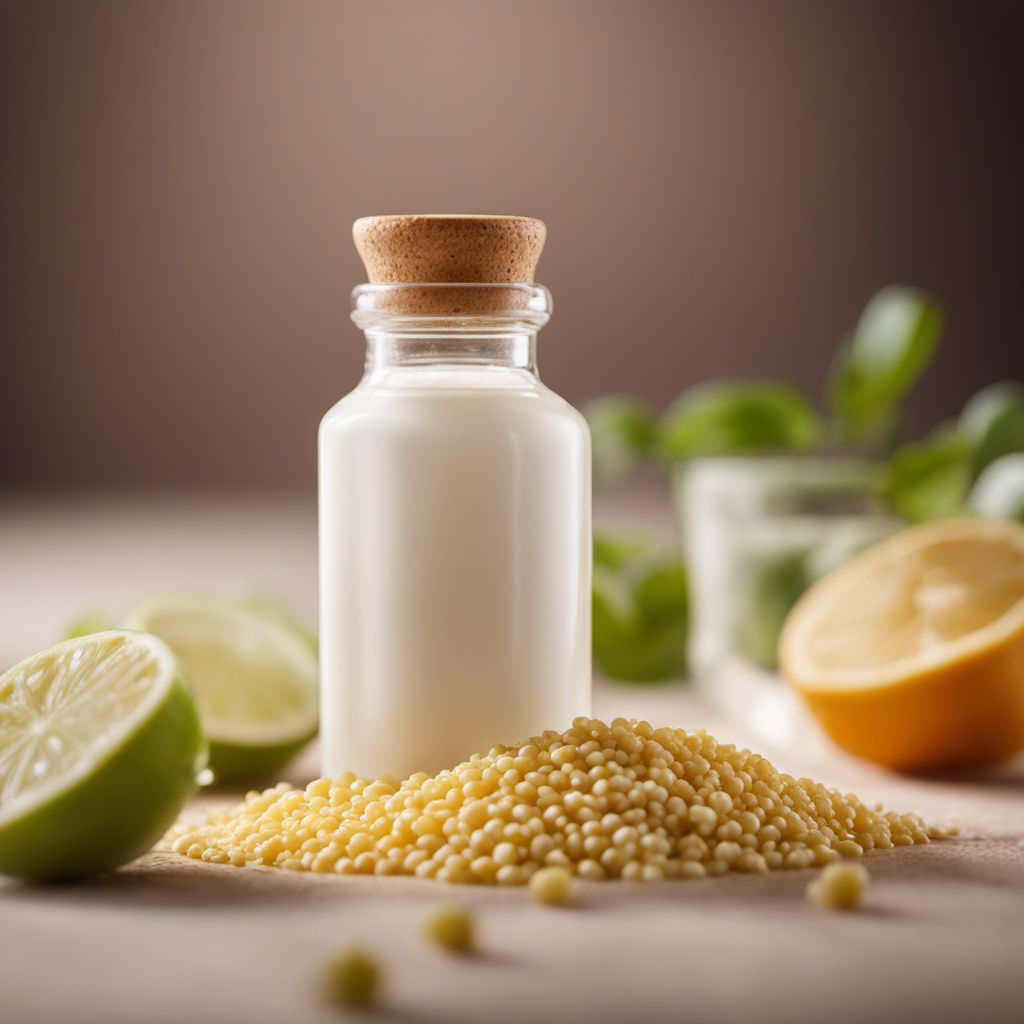
Ingredient
Infant formulae
Nourishing Baby Elixir
Infant formulae is a powdered or liquid product that aims to mimic the nutritional composition of breast milk. It typically contains a blend of proteins, carbohydrates, fats, vitamins, and minerals necessary for a baby's healthy growth. The taste and texture of infant formulae may vary depending on the brand and type, but they are generally formulated to be easily digestible for infants.
Origins and history
The concept of infant formulae dates back to ancient times when wet nurses were employed to breastfeed infants who were unable to be nursed by their biological mothers. The first commercially available infant formulae were introduced in the late 19th century, providing an alternative to breast milk for infants who couldn't be breastfed. Today, infant formulae are widely used around the world, offering a convenient and nutritionally balanced option for feeding infants when breastfeeding is not possible or desired.
Nutritional information
Infant formulae is a nutritionally complete food source for infants, providing essential nutrients such as proteins, carbohydrates, fats, vitamins, and minerals necessary for their growth and development.
Allergens
Infant formulae may contain allergens such as cow's milk proteins or soy proteins, which can cause allergic reactions in some infants. It is important to consult with a healthcare professional if there are concerns about potential allergens in infant formulae.
How to select
When selecting infant formulae, it is crucial to consider the specific nutritional needs of the infant, such as age, any existing allergies or intolerances, and the recommendation of a healthcare professional. Look for reputable brands that meet the necessary safety and quality standards, and choose the appropriate type of formula (e.g., cow's milk-based, soy-based, hypoallergenic) based on the infant's requirements.
Storage recommendations
To maintain the freshness and quality of infant formulae, it is essential to store it in a cool, dry place away from direct sunlight. Follow the storage instructions provided by the manufacturer, as different types of formulae may have specific storage requirements. Once prepared, any unused formula should be refrigerated and used within 24 hours.
How to produce
Infant formulae is typically produced by specialized manufacturers using strict quality control measures to ensure safety and nutritional adequacy. It requires specialized equipment and expertise to produce on a large scale, making it challenging for amateurs to produce at home.
Preparation tips
To prepare infant formulae, follow the instructions provided by the manufacturer carefully. It usually involves mixing the powdered formula with water at the recommended ratio and temperature. It is important to use clean and sterilized bottles, nipples, and utensils to prevent contamination. Always test the temperature of the formula before feeding it to the baby to avoid scalding. Additionally, it is crucial to consult with a healthcare professional for guidance on the appropriate type and amount of formula for the specific age and needs of the infant.
Culinary uses
Infant formulae is primarily used as a substitute for breast milk when breastfeeding is not possible or desired. It serves as the main source of nutrition for infants during their early months or until they are ready to transition to solid foods. Infant formulae can be used to prepare various baby food recipes, such as cereals, purees, and porridges, to introduce infants to different flavors and textures.
Availability
Infant formulae is widely available in grocery stores, supermarkets, pharmacies, and online retailers worldwide. It is commonly found in the baby care section or the aisle dedicated to infant products.

